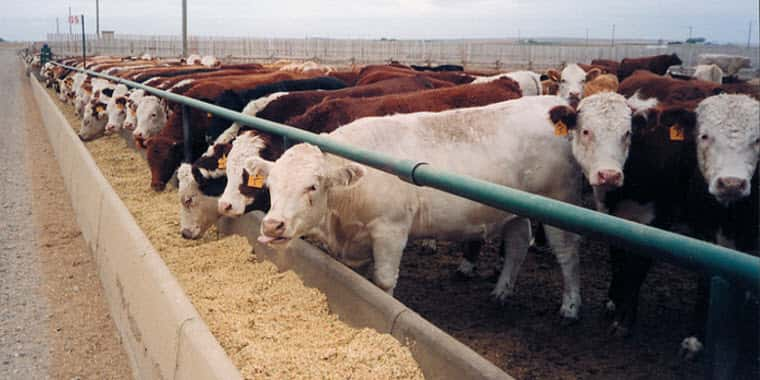Derrell Peel – Oklahoma State University
Markets are the primary means that the production and consumption of products are coordinated in the U.S. economy. Normally markets ensure that supply and demand are in equilibrium, or close to it, at all times and respond to changing conditions through countless small adjustments made constantly by producers and consumers. Market adjustments are typically very subtle and commonly overlooked. A freely-operating market economy moves through time much as driving a car depends on a constant stream of tiny adjustments rather than violent swings of the steering wheel to the right and left.
However, sudden, large shocks disrupt the balance of supply and demand and reveal how dramatic market actions occur that help reestablish equilibrium. The recent fire at the Tyson beef plant in Finney County, Kansas is just such an example. It is much like throwing a rock into a pond resulting in a big initial splash and ripple effects spreading out in all directions. The initial splash of the plant closure included a dramatic set of market reactions.
With fresh beef production suddenly decreased, boxed beef prices rose sharply to ration a suddenly limited supply. Choice boxed beef prices increased by over $22/cwt. or 10.3 percent in one week. This illustrates one of the most important functions of markets (one that is commonly taken for granted): markets make sure that we don’t run out of things. With less supply available, the market uses higher prices to determine how limited beef supplies will be allocated. It is a common market reaction. When a freeze hits Florida, orange juice prices begin to rise immediately, not because there is an immediate shortage of juice but to make sure that the current supply continues to be available over time. Markets will never tell a consumer that they cannot have a product but prices will rise enough to convince some consumers not to consume as much of the product at this time.
The corollary to the above is that markets make sure that we don’t waste products. This is particularly important for perishable products. Thus, watermelon prices drop dramatically when the seasonal supply becomes available to make sure that all watermelons are consumed. Fed cattle ready for slaughter are no less perishable and the current drop in fed prices ensures that all possible adjustments are used to absorb the cattle into remaining industry capacity. Prices decrease enough initially to provide ample incentive to change existing production plans and cover the additional costs of shifting logistics and timing of production.
The complex set of markets in the cattle and beef industry are all impacted initially. Live and feeder futures dropped sharply for two days before beginning to moderate late last week. It is one of the functions of the futures markets to anticipate the worst case scenario, especially in the face of much uncertainty, before moderating as the reality of the situation becomes clearer. Feeder cattle markets also decreased in the face of lower fed prices and the uncertainty roiling all markets. Much like rock in the pond, the initial splash is big and the waves will subside as the impacts ripple out in all directions over time.
Is the initial reaction an overreaction? In one sense yes, but it is a very common market response to reestablish supply and demand balance quickly. We see it in all markets and certainly in agricultural markets. Corn prices of $7/bu. in 2012 helped ensure increased corn production to overcome drought impacts and meet growing corn demand; and $3/cwt. calf prices provided the temporary incentive to jumpstart herd expansion in 2014. By virtue of extreme initial reactions, markets ensure that equilibrium in supply and demand is reestablished as quickly as possible. The sudden shock of the current situation and the resulting big initial market reactions encourage buyers and sellers to change plans; incur additional costs; and react quickly to new arbitrage opportunities.
What should we expect going forward? Similar situations from the past may provide some indications. In December, 2000, a ConAgra beef packing plant in Garden City burned completely; never to reopen. Subsequent research confirmed initial reactions generally similar to the current situation. Most of the negative impacts on fed cattle prices subsided in three to six weeks after the event. Packing capacity relative to cattle supplies is somewhat tighter this time so the impacts may be slightly larger or longer-lived. Nevertheless, boxed beef and cattle markets will likely adjust relatively quickly in the coming weeks with final adjustments depending on the duration of the plant closure.


